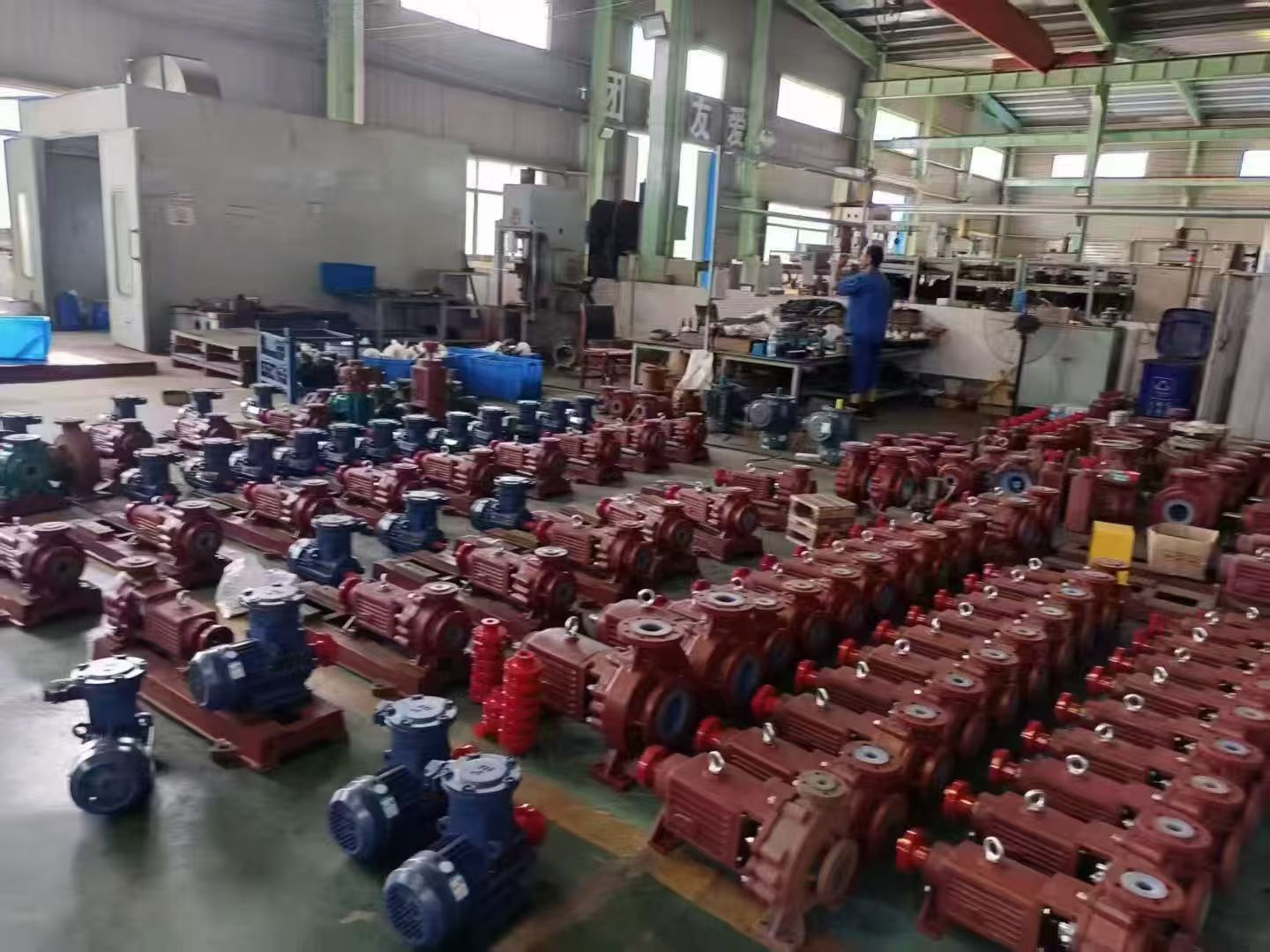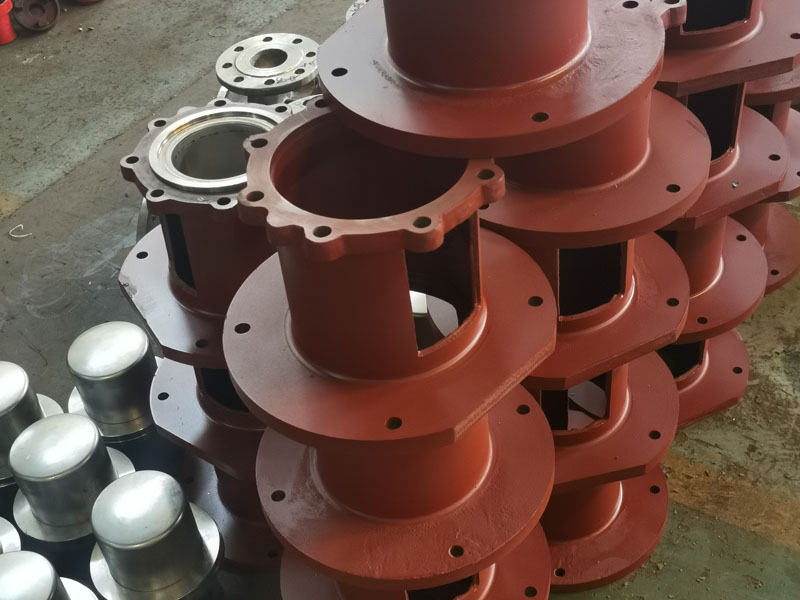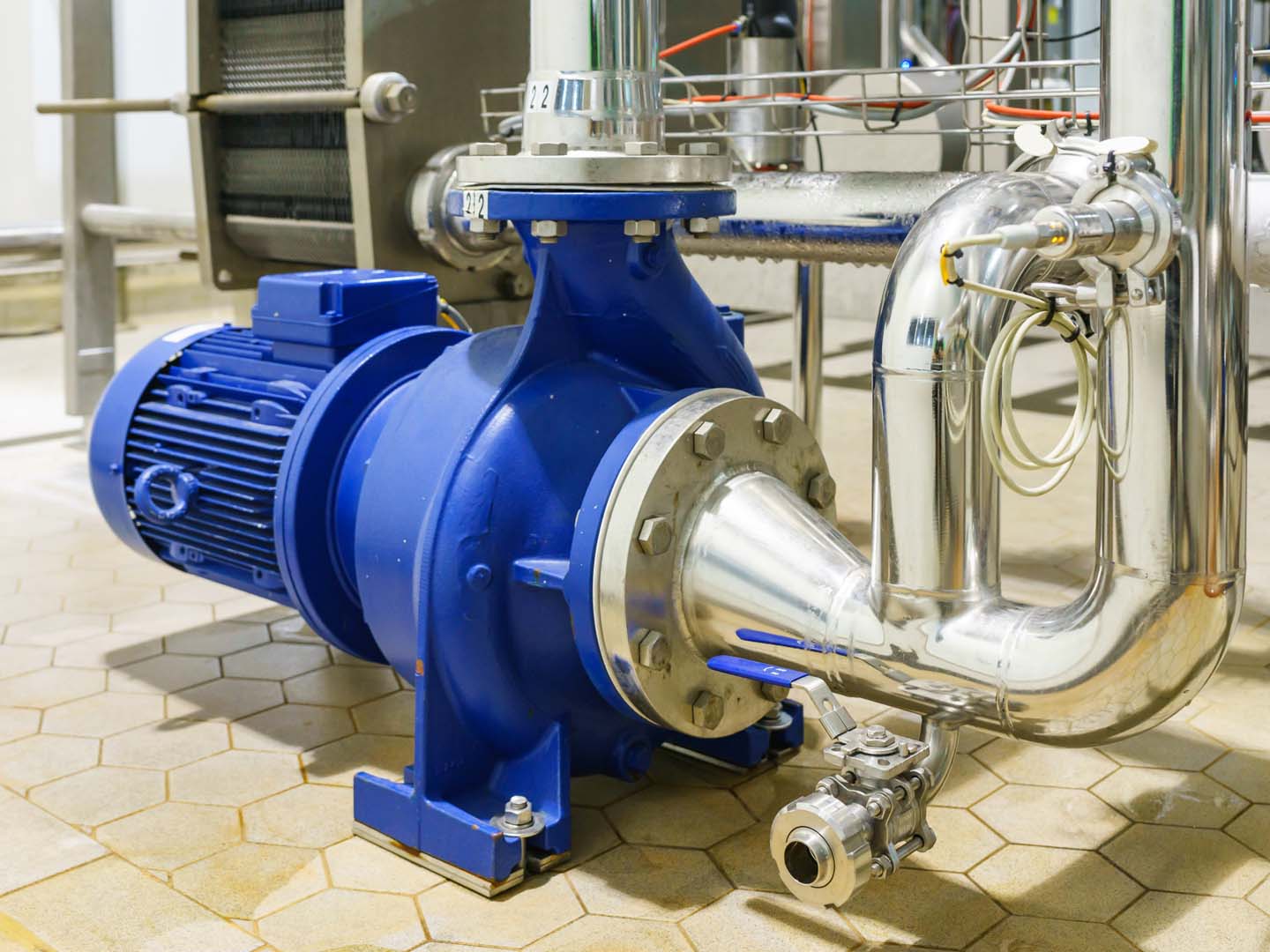Chemical centrifugal pumps, as reliable assistants in the chemical industry, stand out for their excellent performance. They are not only wear-resistant and durable but also ensure uniform water output, stable operation, and relatively low noise levels. Additionally, chemical centrifugal pumps offer highly convenient adjustment functions and outstanding efficiency, making them widely applicable in various fields. So, how are these excellent performances achieved? Simply put, when the pump is filled with water, the rotation of the impeller generates a powerful centrifugal force. This force drives the water in the impeller channels toward the periphery and into the pump casing. As a result, the pressure at the center of the impeller decreases, creating a pressure difference compared to the pressure in the inlet pipe. This pressure difference allows water to continuously flow from the suction tank into the impeller, enabling a steady water supply.
As the demand for chemical centrifugal pumps grows across various industries, understanding their technical details has become increasingly important. Next, Anhui Shengshi Datang Chemical Equipment Co., Ltd will delve into 20 key questions and detailed answers regarding chemical centrifugal pump technology.
What is the definition and working principle of a chemical centrifugal pump?
A chemical centrifugal pump is a machine that increases the energy of liquids through the centrifugal force generated by the rotation of an impeller. It enables the liquid passing through the impeller to be subjected to centrifugal force, thereby enhancing the mechanical energy of the liquid and achieving efficient liquid transportation.

What are the characteristics of chemical centrifugal pumps?
Chemical centrifugal pumps exhibit the following notable features:
(1) They can flexibly adapt to the diverse needs of chemical processes.
(2) These pumps offer excellent corrosion resistance, enabling them to handle various corrosive liquids.
(3) They are resistant to both high and low temperatures, making them suitable for extreme environments.
(4) Their materials are wear-resistant and erosion-resistant, ensuring long-term stability.
(5) They operate reliably, providing consistent and stable liquid transportation.
(6) Advanced technology is employed to achieve leak-free or minimal-leakage transportation, ensuring safety.
(7) They can successfully transport liquids in critical states, meeting special process requirements.
What are the working principles and structural classifications of chemical pumps?
Chemical pumps can be classified into the following types based on their working principles and structures:
(1) Vane pumps, which use the rotation of an impeller to generate centrifugal force for liquid transportation.
(2) Positive displacement pumps, which utilize changes in working volume to transport liquids.
(3) Other types of pumps, such as electromagnetic pumps, jet pumps, and airlift pumps. These pumps vary in working principles and structures but all achieve effective liquid transportation.
Detailed Explanation of the Working Principle of Centrifugal Pumps
The working principle of centrifugal pumps primarily relies on the rotation of the impeller driven by a motor. During the rotation of the impeller, its internal blades drive the fluid to rotate along with it, generating centrifugal force. Under the influence of this centrifugal force, the fluid is forced outward along the blade channels to the outlet of the impeller. Subsequently, the fluid is guided into the outlet pipe through the diffuser and volute. As the impeller continues to rotate, fluid is continuously sucked in and discharged, enabling the centrifugal pump to operate stably and consistently.

Advantages and Key Parameters of Centrifugal Pumps
1. Advantages of Centrifugal Pumps
Centrifugal pumps not only deliver large and continuous single-unit output flow without pulsation but also ensure smooth operation. Their compact size, lightweight design, and space-saving footprint significantly reduce investment costs. Additionally, the straightforward structure and minimal number of vulnerable parts extend maintenance intervals and reduce operational and repair efforts. Their excellent adjustability and reliable operation have also garnered widespread acclaim. Notably, centrifugal pumps require no internal lubrication, effectively preventing contamination of the transported fluid by lubricating oil.
2. Speed, Power, and Efficiency
The speed of a centrifugal pump refers to the number of rotations the pump rotor completes per unit of time, measured in revolutions per minute (r/min).
The power of a centrifugal pump, also known as shaft power, is the energy transferred from the prime mover to the pump shaft per unit of time, measured in watts (W) or kilowatts (KW).
The efficiency of a centrifugal pump is the ratio of effective power to shaft power, reflecting the extent of energy loss during the energy conversion process.
3. Hydraulic and Mechanical Losses
Hydraulic loss in centrifugal pumps, also referred to as flow loss, is the difference between the theoretical head and the actual head. Hydraulic losses in centrifugal pumps encompass three core aspects: vortex loss, resistance loss, and impact loss.
Mechanical loss refers to the losses caused by bearings, sealing packing, and wear on both sides of the impeller. These wear issues generate unnecessary friction and energy dissipation during pump operation, thereby affecting the pump's efficiency and lifespan.
4. Factors Affecting Performance
When the speed of a centrifugal pump changes, its head, flow rate, and shaft power are all affected. Assuming the medium transported by the pump remains unchanged, the flow rate is proportional to the speed, the head is proportional to the square of the speed, and the shaft power is proportional to the cube of the speed.
5. Number of Blades and Materials
The number of blades in a centrifugal pump impeller is a critical design parameter that directly impacts the pump's performance. In practical applications, the number of blades is typically determined based on specific requirements and operating conditions, with no fixed standard value. However, to ensure efficient operation and optimal performance, an appropriate number of blades is usually selected. Typically, the number of blades ranges from 6 to 8. The strength and corrosion resistance of the materials are key factors in selecting manufacturing materials.

Pump Casing Functions and Diversity
1. Analysis of Pump Casing Functions
In centrifugal pumps, the pump casing plays a crucial role. It collects the liquid and increases the liquid pressure through channel design, making it key to energy conversion. As the liquid flows through the channels in the pump casing, its velocity gradually decreases. This process converts part of the liquid's kinetic energy into static pressure energy, effectively increasing the liquid's pressure.
2. Structural Diversity
Pump casings come in diverse designs, such as horizontal and vertical split types, to meet different application needs. Common structural types include horizontal split, vertical split, inclined split, and barrel-type casings.
3. Diversity in Support Forms
Pump casing support forms are diverse, providing flexible support options. Common types include standard support, center support, cantilever, inline, and suspended support.